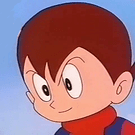An older build based on the Urho3D Qt based editing code I released just recently has been published.
Requirements: Windows 7+ and OpenCL capable CPU or GPU drivers.
This build is quite old (February 2nd) and is either from just before the end of commercial testing or shortly after it (might have been last response), so it should be reasonably stable - though some things like Art-Noise still don’t work correctly. So much has changed since then.
Yes, compared to Substance the graph evaluation is quite slow. Unfortunately, they have a patent on every sane approach to speeding it up, including shared CPU/GPU memory.
Newer builds will be released periodically, probably as soon as a few days and I’ll update this thread with a basic walkthrough of how to use the tool.
It is based on the same framework I pushed to github recently (using some still unpublished elements, though it’s actually quite out of date). This will also help anyone trying to use that code on showing what they need in their output directories.
Next build adds Uber-Noise (per No Man’s Sky), Polar->Cartesian, Cartesian->Polar, and other helpful nodes.
Code release is on hold, it’s intended to be used as a galvanizing point on funding SprueKit’s part library. Builds will come through still though. Report bugs either to this thread or as issues to the github project where the code will eventually land.


